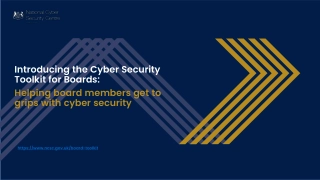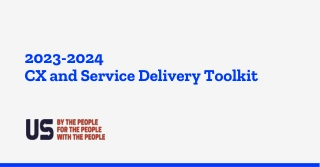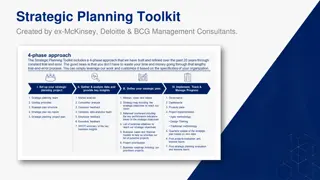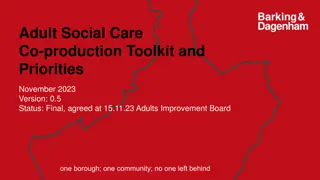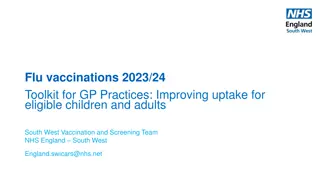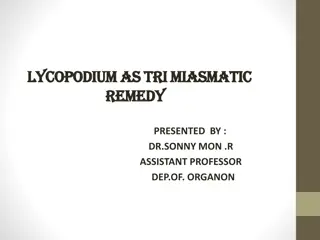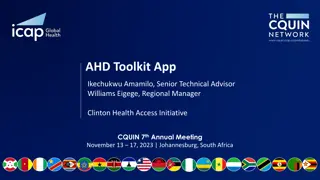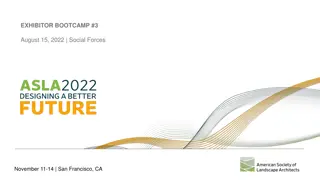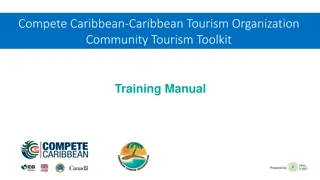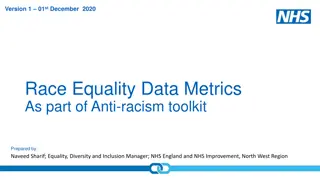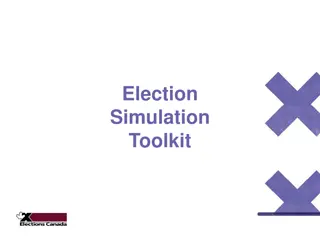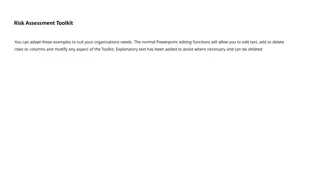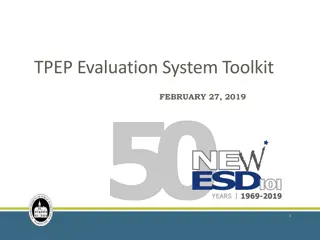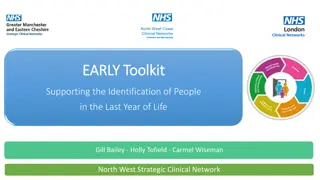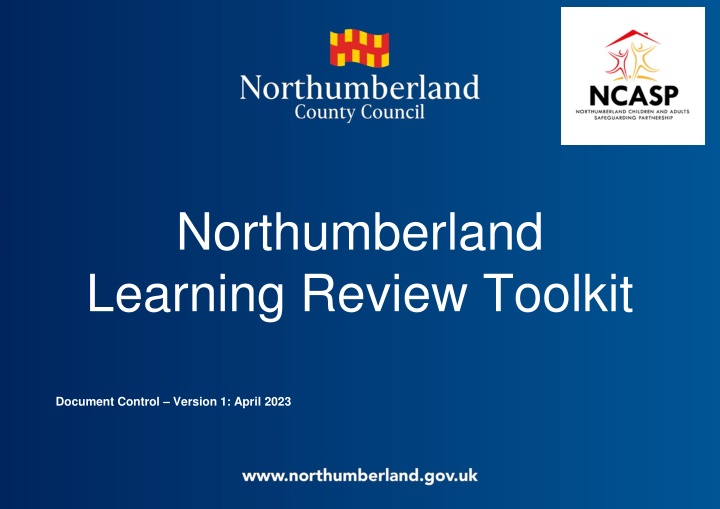
Learning Review Toolkit for Case Reviews in Northumberland
The Learning Review Toolkit is designed to support individuals leading any type of case review in Northumberland. It provides guidance on common challenges, types of methodologies, review stages, and practical resources. Immediate action is emphasized if any information indicates a child or adult at risk. The toolkit aligns review stages with national and regional quality markers, offering support for Lead Reviewers throughout the process.
Download Presentation

Please find below an Image/Link to download the presentation.
The content on the website is provided AS IS for your information and personal use only. It may not be sold, licensed, or shared on other websites without obtaining consent from the author. If you encounter any issues during the download, it is possible that the publisher has removed the file from their server.
You are allowed to download the files provided on this website for personal or commercial use, subject to the condition that they are used lawfully. All files are the property of their respective owners.
The content on the website is provided AS IS for your information and personal use only. It may not be sold, licensed, or shared on other websites without obtaining consent from the author.
E N D
Presentation Transcript
Northumberland Learning Review Toolkit Document Control Version 1: April 2023
Content Introduction to Learning Review Toolkit Common Learning Review Challenges Types of Learning Reviews Types of Methodologies 9 Review Stages Top Tips Checklist Practice Resources 2
Introduction to Learning Review Toolkit This toolkit was created to support those who are leading on any type of case review in Northumberland The toolkit was designed to be used as a reference tool and not a checklist. Different sections will be applicable during various stages of the review If at any point of the review there is any information shared that identifies a child or adult is at risk then immediate appropriate action should be taken i.e. contact the police or raise a safeguarding concern The final section provides links to further practice resources and supporting information / templates The toolkit review stages have been mapped against the national and regional SAR Quality Markers Please remember that support is available for Lead Reviewers 3
Common Learning Review Challenges Understanding the purpose of the Review Timescales and Resources Work capacity and competing demands Support for Lead Reviewer Senior Management team oversight and accountability Clarity of Terms of Reference Understanding wider impact of delay on person and / or family, professionals, statutory timescales There is a requirement for agreement and sign-off at each stage of the review Quality of information quantity, detail, structure, content, order Analysing information Focus is on production of report, rather than the actions and sharing learning Setting SMART and achievable recommendations Unconscious bias Different IT systems Understanding terminology 4
Types of Learning Review (1) Safeguarding Adults Review (SAR) Statutory, multi-agency review where an adult (aged over 18) with care and support needs has died or experienced serious abuse/neglect and there is reasonable cause for concern about how the Safeguarding Adults Board members, or others worked together to safeguard the adult. (Safeguarding Adults Board) Domestic Homicide Review (DHR) Statutory, multi-agency review of the circumstances in which the death of a person aged 16 or over has, or appears to have, resulted from violence, abuse, or neglect by a person to whom they were related or with whom they were, or had been, in an intimate personal relationship, or a member of the same household as themselves (Community Safety Partnership) Child Safeguarding Practice Review (CSPR) Statutory, multi-agency reviews where abuse of a child is known or suspected, and the child has died or been seriously harmed (referred to as a serious child safeguarding case). A multi-agency rapid review will be undertaken initially to determine whether a Child Safeguarding Practice Review is required. (Safeguarding Children Partnership) MAPPA Serious Case Review Undertaken when an offender subject to MAPPA commits a Serious Further Offence (SFO). The purpose is to examine whether the MAPP arrangements were effectively applied and whether agencies worked together to do all they reasonably could to effectively manage the risk of further offending in the community. (MAPPA Strategic Board) 5
Types of Learning Review (2) LeDeR aims to improve care, reduce health inequalities and prevent premature mortality of people with a learning disability and autistic people by reviewing information about the health and social care support people received. Everyone with a learning disability aged four and above who dies and every adult (aged 18 and over) with a diagnosis of autism is eligible for a LeDeR review. LeDeR Reviews (Learning from lives and deaths people with a learning disability and autistic people) (Integrated Care Board) Coroner s Inquest A coroner must hold an inquest if: the cause of death is still unknown (following a post-mortem); the person might have died a violent or unnatural death; the person might have died in prison or police custody (Coroner s Office) An Inquest is an investigation into a death, designed to find out who the deceased was, and where, when, and how. A case review (single or multi-agency) may be required in a range of circumstances e.g.: Case Review (Can be requested from anywhere) - - - The SAB may wish to determine if a SAR referral is required To respond to a complaint Coroner s request 6
Types of Methodologies (1) Well-known and long-standing approach to undertaking reviews. It involves the agencies involved with the case completing chronologies and/or Individual Management Reviews (IMRs). Agency authors need to research case files and speak to the staff involved and produce a report analysing their involvement. Traditional SAR model This is a SCIE developed model which undertakes SARs in rapid time. A SAR In Rapid Time aims to have a turnaround time of 15 working days from set-up meeting, held after the decision has been made to progress with a review. SCIE Rapid Review model Appreciative Inquiry approach asks generative open questions about what worked well, alongside what might and should be different in the future. The approach recognises that in order for people to be able to think, reflect, learn and change; participants need to feel supported, respected and valued. Appreciative Inquiry tries to place more emphasis on learning from good practice through conversations . Usually, the case is reviewed at one event involving the practitioners that were involved with the case. SILP analyses significant events and deals not only with what happened but why it happened. SILP approach is rooted in systems methodology, and can identify what affected the practitioner s actions and decision making at the time and what needs to change. Appreciative Inquiry Significant Incident Learning Process (SILP) SILP reviews see equal value in learning from good practice, and families and significant others are offered opportunities to engage with the reviews. 7
Types of Methodologies(2) A Practitioner Workshop/Learning Event is a good way of hearing from the practitioners about their involvement. They are usually led by the SAR author and enables the reviewer to understand in greater depth whether there are any lessons that can be learnt to improve practice in the future and it also enables good practice to be identified and shared. Practitioner workshop / Learning event Research in Practice have guidance on Developing Effective SAR Learning Events. Learning Together reviews are conducted by a multi-agency Review Team which is led by two Lead Reviewers (accredited by SCIE). This systems approach explicitly focuses on a deeper understanding of why professionals have acted in the way they have, so that any resulting changes are grounded in practice realities. Learning Together Review Developing a combined chronology of events is useful way of achieving an overview of case and areas for improvement or development. This enables agencies to identify gaps in communication, shared decision making and risk assessment, and make recommendations for change. Multi-agency combined chronology 8
Overview of the 9 Review Stages 1. Accountability and Support 2. Terms of Reference 3. Evidence Gathering / Chronologies 4. Involving the Person and / or family or their advocate where appropriate 5. Co-production with workforce and stakeholders 6. Analysis, Findings and Recommendations 7. Learning Review Final Report 8. Action Planning and Review 9. Sharing Learning 9
1. Accountability and Support Quality Statement: There are clear governance arrangements agreed from the outset, and the Reviewer is fully supported to undertake a quality review within the required timescales. Accountability Senior Management is accountable for all aspects of the reviews and should be kept fully informed throughout the process. Support Reviewers should be afforded sufficient capacity, resources and support to undertake quality reviews Mentoring, support, buddying and training arrangements should be agreed at the outset of the Review process. This would include individual feedback to the reviewer on strengths and areas for improvement Senior Leaders need to be informed of any issues in relation to key staff, admin support or Reviewer capacity, that may impact on quality and timings of the Learning Review. Reviewers should establish a process to allow challenge to the information and analysis of the review, so that findings and recommendations can be fully considered before the report is finalised. Access to all the relevant case notes and files Access to practitioners involved within the case Access to templates i.e. chronology, terms of reference Clear governance arrangements need to be in place from the outset, including the sign-off process and timescales. Dedicated supervision and support for the Learning Review The SAB or other coordinating Partnership need to be informed of any delays and reasons for them, at the earliest opportunity. A range of Learning Review and SAR resources are available in the Northeast SAR library contact SAB Business Manager. As Lead Reviewer you are responsible for identifying any additional support that you require 10
2. Terms of Reference Quality Statement: The Terms of Reference should focus upon learning and improvement across organisations and acknowledges any contributory factors specific to the review Introduction This should include who made the decision to undertake a learning review and why. Dates need to be included of key events, such as the date the case was allocated to the lead reviewer. Include the pseudonym name of the person, where appropriate, and explain about confidentiality. Case Summary If appropriate include a case summary and the scoping period of the case review. Scoping Period and Key Episodes - Identify the scoping period for the Learning Review, during which most (if not all) of the key episodes have occurred -If any significant events have occurred outside of the scoping period these should be referenced - Record any key issues and / or key episodes to be considered as part of the review. Purpose of the review Reinforce the review is not to apportion blame. It is about learning and improvement. Include legal frameworks if applicable. Methodology Identify the type of methodology to be used in the review i.e. Appreciative Inquiry Involvement of the adult; family or advocates where appropriate - Identify who is involved - Specify the initial desired outcomes of the person, family or advocate - Consider pseudo names if relevant. - Highlight if the person has any protected characteristics and if this has impacted upon the case Refer to the principles of the Care Act 2014 if appropriate i.e. Empowerment, Prevention, Proportionality, Protection, Partnership, Accountability. Describe how you are going to review the information where the information is held, which stakeholders are involved and who will engage with them i.e. coroner / police / out of area stakeholders Timescales - Identify clear review timescales and key communication dates 11
3. Evidence Gathering / Chronologies Quality Statement: Evidence / Chronologies should provide quality information to underpin the analysis of the case Evidence Gathering Chronology Consider and review any written evidence relevant to the case i.e. electronic case records, paper records, minutes, previous reviews A chronology provides an overview of key dates and events within the scoping period Avoid any duplication and repetition by utilising documents already completed Establish facts Identify what policies, procedures, and guidance are relevant to the case Incorporate any relevant views of the person, families or advocates that are included within records Identify any missing sources of information and follow up Comments on the chronology should include agency review of the appropriateness / quality of the intervention which may assist to inform the analysis Where necessary, discuss with the police any information relevant to criminal proceedings Emphasise the importance of agencies identifying their own themes and significant events KEEP IT PROPORTIONATE AND SUCCINCT! 12
4. Involving the Person and / or family or their advocate where appropriate Quality Statement: The person, relevant family members are informed and involved, being mindful of treating them with respect. The report is informed by knowledge and experience of the person, family and relevant network regarding the period under review. Identify the key family contact Where there are criminal proceedings, ensure a discussion has taken place with the police (Senior Investigating Officer) and / or Coroner around the family involvement with the process Identify a lead officer who is point of contact for the learning review Inform the person, relevant family members of the review at the earliest opportunity Consider how the family are to be represented in the final report and how do they provide feedback Be clear and transparent Formally acknowledge and thank the family for their involvement within the report Discuss the purpose, process and parameters of the review in the most appropriate way to promote understanding. There may be circumstances when a decision is made to not involve the person and/or family members/friends or where there are no family members or friends known. There should be clearly documented decisions around involvement / non-involvement of the person or specific representative(s) Agree a communication strategy. Confirm with the family their preferred methods and timeliness of communication throughout the process (verbal, written)? Where possible, confirm information in writing At the end of the process, if the key family contact is dissatisfied with the outcome / process then they should be provided with appropriate next steps i.e. complaint, LGA Ombudsman Review expectations throughout the learning review 13
5. Co-production with workforce and stakeholders Quality Statement: Learning Reviews should be co-produced with those practitioners, managers and partners who were involved in any decision making or interventions for the case, and those who have knowledge about the wider policies, procedures and governance arrangements. Who do we need to collaborate with? Practitioners directly involved with the service user context is key Managers who had oversight of the case Representatives from partner organisations who have been involved Managers responsible for any policies or procedures that were followed General points to consider: Who will undertake this collaboration, think about: - Workload - Confidence and ability to lead discussions / workshops / interviews - Is there the requirement for independence? What support and protection is in place for the individual(s) you are collaborating with i.e. manager, colleague, HR, trade union representative, policy and procedures i.e. SAR Policy The purpose, process and parameters of the learning review should be shared prior to collaboration to promote understanding Agree what will be shared post collaboration i.e. key findings What arrangements are in place to record workforce and stakeholder collaboration Methods for involvement: One to one these could be formal interviews or more informal discussions as appropriate Surveys for example, to determine whether a particular procedure is routinely followed Focus Groups consider dynamics and support / protection within the focus group i.e. including practitioners with senior managers may impact upon involvement / wellbeing Learning Events / Workshops 14
6. Analysis, Findings and Recommendations Quality Statement: The Learning Review analysis and subsequent findings and recommendations should be transparent and rigorous. It should evaluate and explain professional practice in the case, highlight challenges, themes and learning Analysis: Analysis should draw on the full range of relevant information and evidenced gathered, to evaluate and explain professional practice in the case Analysis should help explain why people did what they did, taking into account: - Organisational culture - Challenges and constraints of work environment consider what support was available for the practitioner - Multi-agency and multi-professional working - Wider system - Contextual information Consider equality, diversity and inclusion were there any protected characteristics or other factors that impacted upon vulnerability or practice Is current, up to date research evidence / learning used in the analysis? i.e. national SAR library, NICE guideline recommendations Be clear about any methodological limitations that may impact on the final analysis i.e. unable to speak to practitioners as they have moved jobs Where possible, ask stakeholders to undertake analysis on their area of expertise Avoid hindsight bias Findings: All findings should be derived from the analysis of evidence and research Findings should reflect causal factors, systems learning, single and multi-agency learning Use a strengths-based approach, start with those findings that demonstrate good practice before moving onto areas for improvement Findings should relate to the lived experience of the person and / or their family Recommendations: Recommendation should be based upon the analysis and findings If possible, theme the recommendations for ease of future action planning Recommendations should be specific, realistic and achievable 15
7. Learning Review Final Report Quality Statement: The Learning Review Final Report should clearly and succinctly identify the analysis and findings while keeping the details of the person to a minimum. General Points: The Learning Review final report should be as succinct as possible i.e. no more than approximately 20 - 30 pages The report is not a comprehensive description about what has happened. The focus should be on the analysis, findings and recommendations. Think about the intended audience for the report i.e. will the report be published online, is the Learning Review a statutory requirement? Consider writing a summary report and / or 7-minute briefing Consider how you will promote open and constructive challenge in relation to the findings of the report Consider whether or not the report should be published and / or shared more widely than Northumberland would the findings and recommendations resonate in other localities? If so, a clear communication plan will be required Use appendices, foot notes and references Final Report Checklist: Does the report meet the requirements of the Terms of Reference? Has the person / family / staff / stakeholders had opportunity to contribute to the report and comment on an initial draft? Does the report sufficiently protect the privacy of the person, family members and practitioners whilst still being accessible and able to support future practice improvement? Is information from contributing agencies fully and fairly represented in the report? Is the tone and choice of words appropriate and is the report written in a way that is to the point, understandable and useful? Formally acknowledge and thank the family for their involvement within the report. 16
8. Action Planning and Review Quality Statement: A robust action plan should be produced in response to the final report, detailing actions to be taken and review Note the Lead Reviewer role may end once the final report has been endorsed. Action Planning Review Consider who should be involved, and to what extent, in drafting and approving the action plan Is specialist support or facilitation needed Does the proposed responses genuinely tackle the risks identified by the learning review? Action Plans should include specific actions on sharing and building upon good practice identified within the report Have any quick wins been identified best practice would be to implement actions as soon as practicably possible do not need to wait for the production of the final report Consider learning from previous reviews and where previous actions have not demonstrated positive impact Be creative! Think about doing things in different ways. What arrangements are in place for monitoring of improvement actions? How will impact be evaluated? Think about timescales for revisiting the review. It could take a long time before impact is realised Have the findings been communicated and embedded in training, policy and guidance? 17
9. Sharing Learning Quality Statement: The Case Review findings should inform effective implementation of any system changes. The impact of the findings should be evaluated to ensure they positively influence practice and improve safeguarding of adults. Within own organisation Within other organisations Ensure learning is identified and shared include both good practice and areas for improvement Involve Training Leads and Senior Managers to develop appropriate awareness raising / training with the workforce. Think about opportunities to reflect and discuss the learning in context of own practice Consider how you will measure and evaluate impact of learning Agree process to revisit learning if appropriate Communicate findings with partner agencies to promote awareness and improvements Seek assurances that recommendations have been followed and learning has been shared If appropriate share the learning locally, regionally and where appropriate escalated nationally 18
Top Tips Checklist Be strengths-based always look out for good practice Keep your line manager informed through supervision and regular discussion Identify your support contacts early in the process Arrange initial, mid-way and final review meeting with your support Agree deadline for final draft to allow senior managers time to review and submit feedback Ensure you have allowed time for reviewing edits and making any necessary changes Seize opportunity for early learning and improvement actions don t need to wait for final report Maintain contact with the person and / or their family or representative as agreed from the outset i.e. monthly catch up Be guided by the templates At recommendation stage, start thinking about how these could be translated into an action plan 19
Practice National SCIE Safeguarding Adult Reviews in Rapid Time SCIE Learning Together Reviews SILP National SAR Quality Markers (SCIE) National SAR Library Writing Chronologies Practice Guidance (CC Inform) Research in Practice Developing effective SAR learning events Local Learning Review Toolkit (including online webinar showcasing the Learning Review Toolkit) Northumberland SARs / DHRs / Learning Reviews Examples: SAR - Leanne, Mrs C - DHR, Learning Review - Harry Northumberland Multi-Agency Safeguarding Adult Policy and Procedures SAR Policy North East SAR Quality Markers Checklist North of Tyne Safeguarding Adults Review Policy and Procedures 2023 Review Templates: NCASP Terms of Reference template NCASP Individual Management Review (IMR) template NCASP Chronology template and guidance Agency report template SILP methodology example Terms of Reference template SILP methodology example 20

